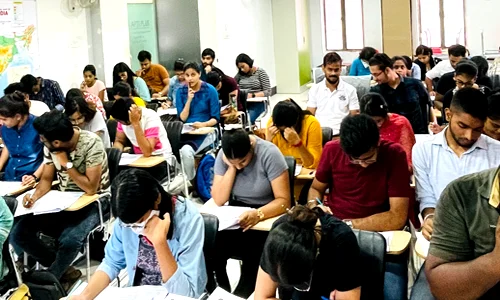



The National Intelligence Grid operates nationwide, linking travel, financial, and telecom databases to give agencies a real-time view of suspects. It strengthens counter-terrorism and breaks intelligence silos, but raises privacy, cybersecurity, and accountability concerns due to limited legislative backing under the Puttaswamy framework today.
Click to View MoreIndia plans to open civil nuclear power to private players to reach 100 GW by 2047. The shift aims to ease financing gaps and speed up projects. Progress depends on removing hurdles in the CLND Act and amending the Atomic Energy Act through the proposed 2025 Bill.
Click to View MoreThe full potential of Community Forest Rights under the FRA is stalled by departmental resistance, legislative dilution, and lack of community awareness, necessitating a mission-mode push with technology and coordinated governance to empower Gram Sabhas and correct historical injustices.
Click to View MoreThe Global Energy Leaders’ Summit 2025 in Puri (Dec 5–7), hosted by Odisha and the Tony Blair Institute, focuses on “Powering India: Sufficiency, Balance, Innovation.” It supports India’s pillars of energy access, efficiency, sustainability, and security while advancing cooperation, clean energy transition, technology, and Net-Zero 2070 goals.
Click to View MoreIndian federalism is competitive, with states vying for investment through reforms encouraged by NITI Aayog indices. This boosts innovation but risks regional inequality and unsustainable incentives. A balanced cooperative-competitive model is needed to pair healthy rivalry with equitable, sustainable national development.
Click to View MoreThe Germanwatch Climate Risk Index 2026 warns that climate disasters since 1995 have killed 832,000 people and caused $4.5 trillion in losses. Poorer nations, including India with 80,000 deaths and $170 billion losses, suffer most. Germanwatch urges urgent COP30 action on finance and ambition.
Click to View MoreMeitY’s new AI Governance Guidelines establish a responsible framework for India’s tech growth, emphasizing trust, safety, and inclusivity. Adopting a risk-based, flexible approach, they ensure accountability across the AI lifecycle, safeguarding digital infrastructure while positioning India as a global leader in ethical, innovation-driven AI governance.
Click to View MoreUnchecked groundwater extraction is sinking major cities, weakening infrastructure and heightening flood and saltwater risks. India must urgently regulate borewells, enforce rainwater harvesting, and adopt integrated, science-based water governance with community participation to safeguard urban stability and secure its most vital resource—groundwater.
Click to View MoreIndia encourages hybrid solar-wind-storage systems to ensure a steady clean energy supply, backed by government policies, despite challenges like high costs and land shortages. To achieve sustainable energy goals and become a global leader, India needs to focus on advanced storage solutions, smart grid development, and adaptable regulations.
Click to View MoreThe Jal Jeevan Mission has raised rural tap water access from 17% in 2019 to over 81% by October 2025, saving 5.5 crore hours daily and averting 4 lakh deaths. Through community participation and digital monitoring, it strengthens sustainability, water quality, and rural empowerment nationwide.
Click to View MoreHygrocybe pellucida, a rare waxcup fungus, has been found for the first time in Telangana's Kawal Tiger Reserve, extending its known range from Kerala. This discovery signifies the existence of undisturbed habitats and emphasizes the importance of preserving India's fungal biodiversity.
Click to View MoreThe Per Drop More Crop (PDMC) scheme supports micro-irrigation techniques such as drip and sprinkler systems. It provides financial assistance to facilitate state-driven water conservation initiatives. This, in turn, enhances agricultural productivity, optimizes water usage, and increases farmer incomes.
Click to View More
© 2025 iasgyan. All right reserved